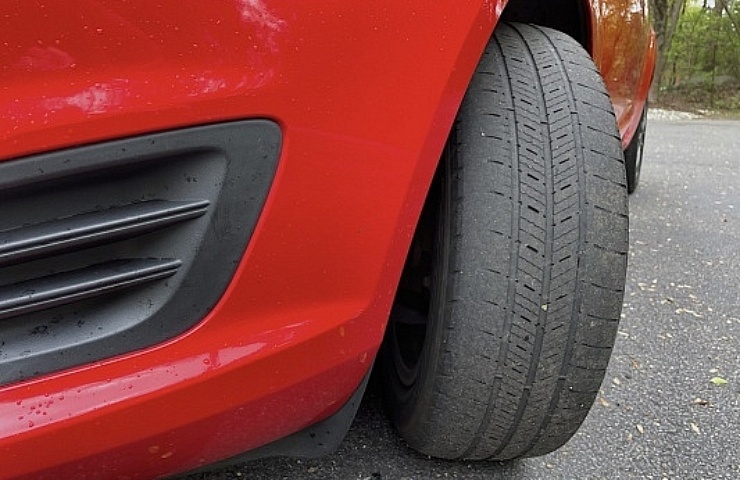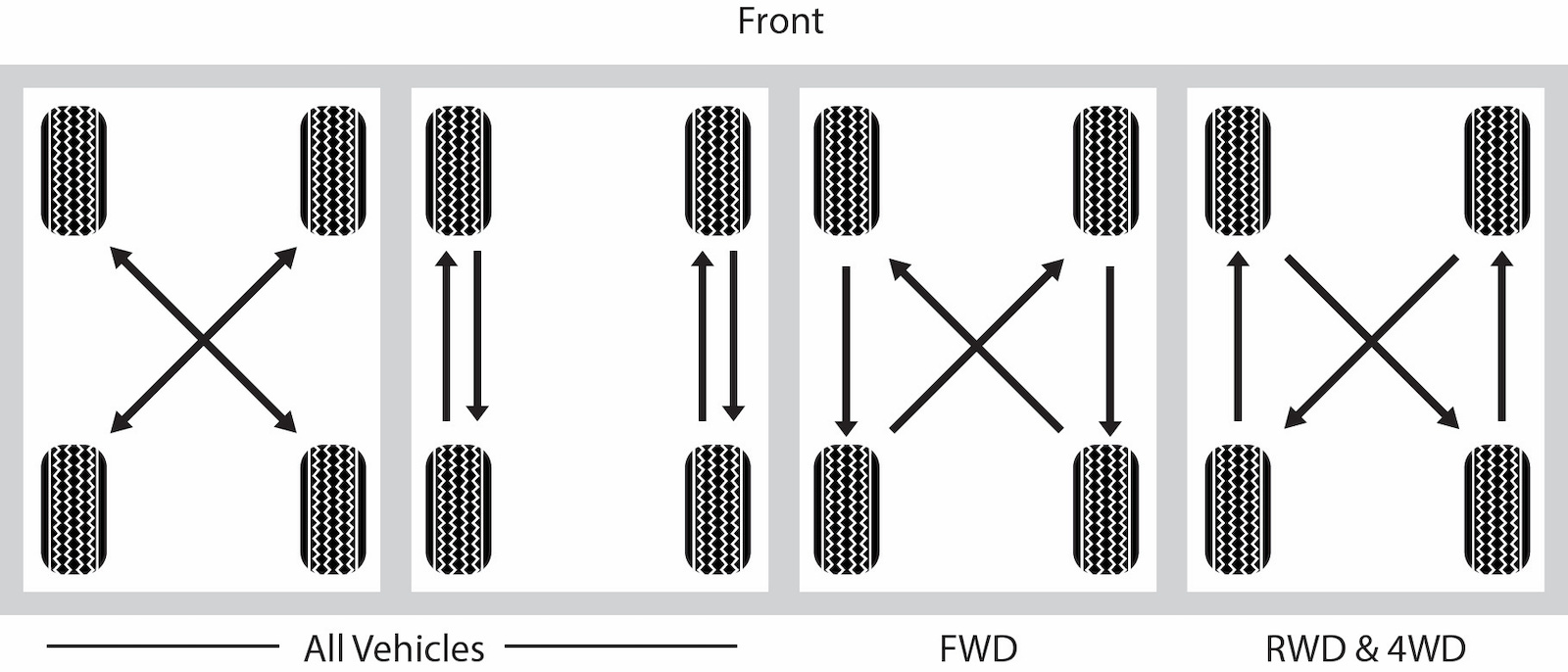Contents
Tires are your vehicle’s connection to the road. Yet, many drivers skip the simple steps to ensure their tires are safe and extend their use. These steps save money and can save lives. Unfortunately, one of the most neglected tasks is tire rotation.
Take note: Tire rotation is preventative maintenance. It doesn’t fix underlying problems that might exist.
What Is Tire Rotation?
Simply put, tire rotation is moving tires from one position on a vehicle to another. Typically, tire rotation involves moving the front tires to the rear and the rear tires to the front.
Tires can also change from one side of the vehicle to the other. For example, the left and right rear tires would change sides when moving to the front of the car, while the front tires stay on their respective sides when moving to the rear.
Since there are many possible rotation patterns, following the directional pattern outlined in your vehicle’s owner’s manual is the best place to start. Read on for more information about a tire’s directional pattern.
How Often Should Tires Be Rotated?
Tires will wear at different rates depending on whether your vehicle is front-, rear-, or all-wheel drive. Typically, tire rotation is called for every 5,000 to 7,500 miles or at least every time you change your oil. Regardless, plan to rotate your tires at least every six months. If you need new tires sooner than every 20,000 miles, you’re likely not maintaining proper tire rotation.
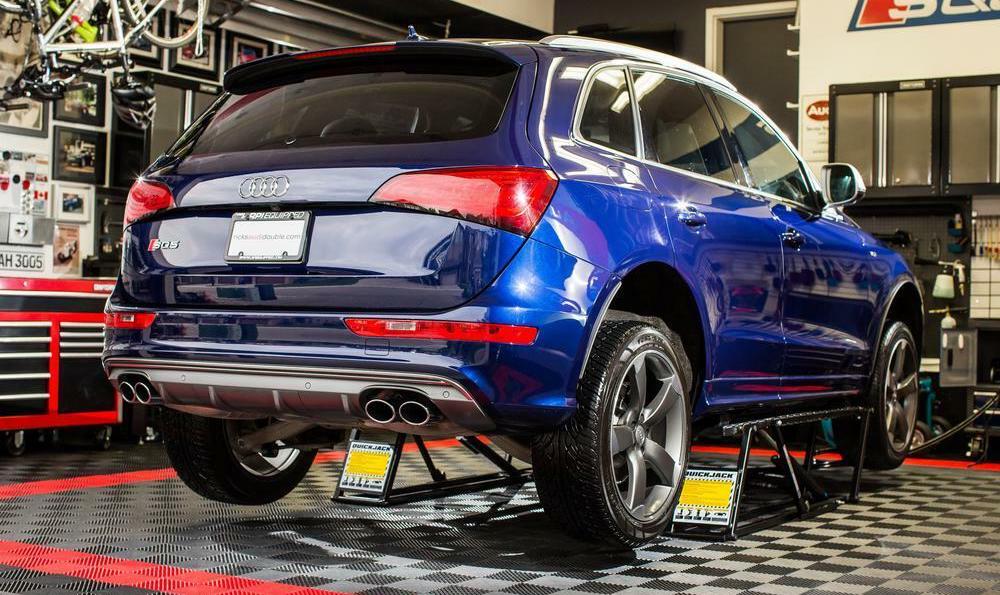
Tire rotation is typically done in an automotive shop with a lift. QuickJack makes rotating tires at home a snap.
One of the first signs of needing a tire rotation is when your car vibrates while driving at higher speeds. That’s because the tread on your tires is wearing unevenly, causing an imbalance. In this case, if the problem can be remedied by a tire rotation, an alignment is needed as well.
Shop now for QuickJacksWe recommend inspecting tires regularly for signs of wear and tear. Look for uneven wearing of the treads, bald spots, or tire cupping on the tread surface. If you note any of these issues, the tire should be replaced. Rotating the tire simply moves the damage to a different corner of the car. Remember, rotation doesn’t fix underlying problems.
Tire rotation and tire balancing are essential to ensure vibration-free driving and even tread wear. Tire balancing and tire rotation are independent of each other, but it’s a good idea to have both performed at the same time.
The Difference Between Tire Rotation and Wheel Alignment
It’s important to make a distinction between rotating your tires and aligning wheels.
- Tire rotation is the process of moving each tire to a different position on your vehicle to ensure that each tire wears evenly. It is an essential service you should never skip.
- Wheel alignment refers to properly adjusting your vehicle’s steering and suspension system to ensure your tires are hitting the ground properly while driving.
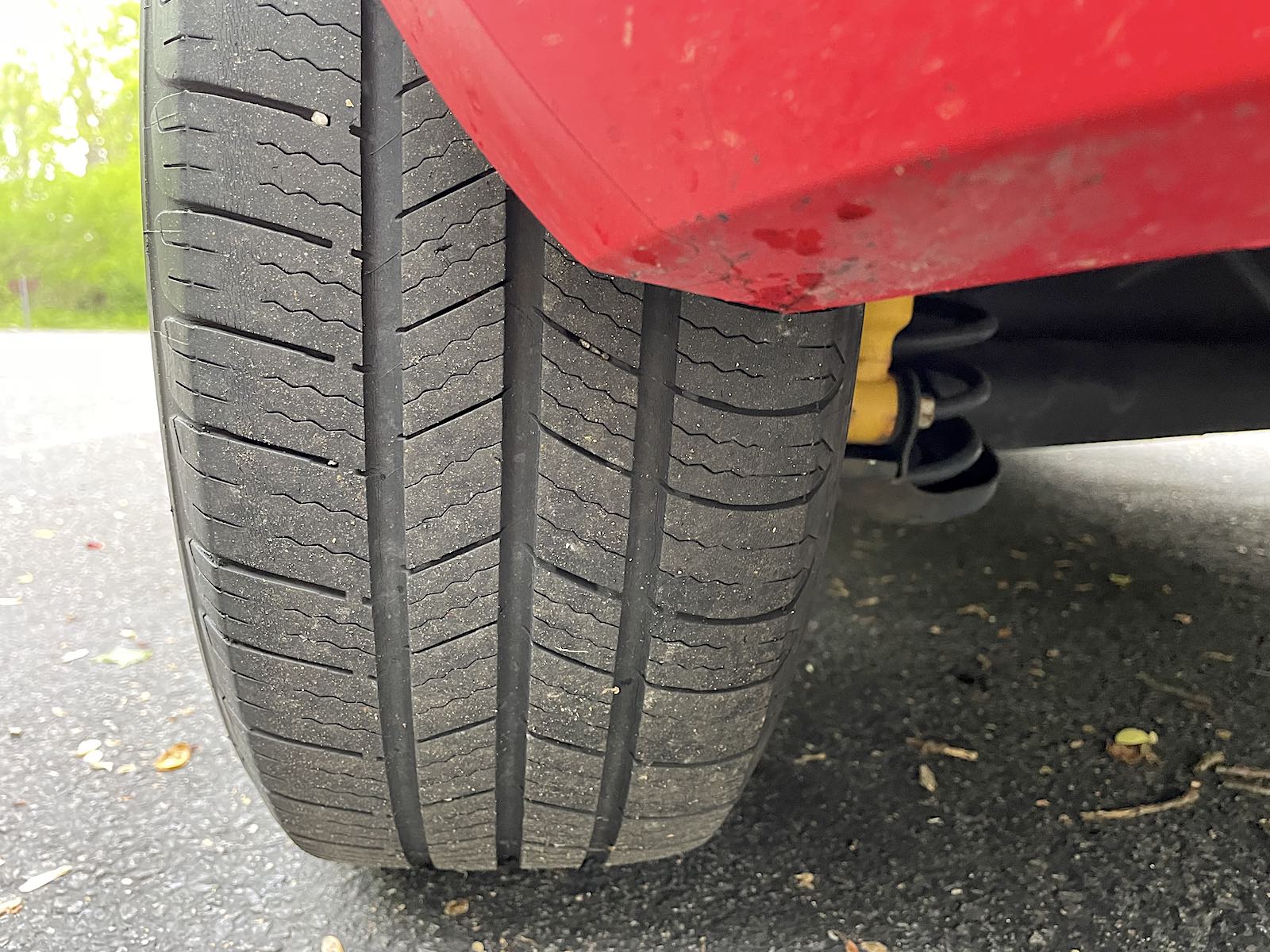
Proper tire rotation allows your tires to last longer. Compare this rear tire to the worn out front tire at the top of the page.
Every vehicle’s suspension is uniquely calibrated to ensure its wheels hit the pavement at the right angle. A wheel alignment ensures that your vehicle’s steering wheel is centered and wheels are properly aligned to help promote even tire wear. Wheel alignments are generally not needed as often as a tire rotation. You can usually wait anywhere from 7,500 to 10,000 miles or when you notice symptoms of alignment problems.
Services like tire rotation and wheel alignment are essential for extending the lifespan of your tires and suspension—and they save you money.
When Should You Avoid Rotating Your Tires?
There are a few reasons you shouldn’t rotate your tires. First, vehicles with directional tires and staggered wheel sets should not be rotated. Also, never rotate a tire with 4/32” or less remaining tread depth to the rear tire position.
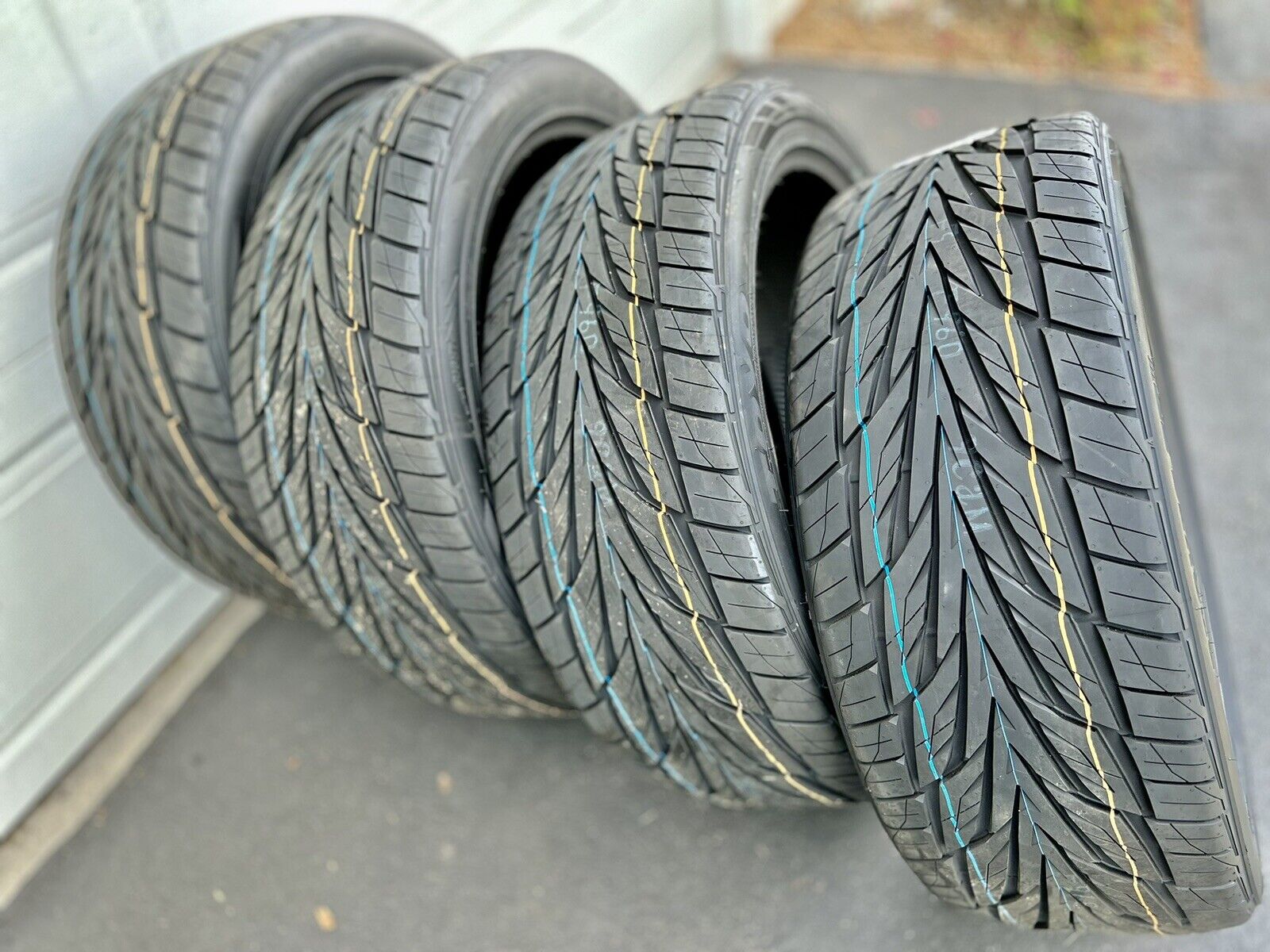
The Toyo Proxes ST III is a directional tire and should not be rotated from side to side.
- Directional tires can only be rotated from front to rear.
- Staggered wheels can only be rotated from side to side.
- If you have both directional tires and a staggered set of wheels, you can’t rotate your tires without causing problems.
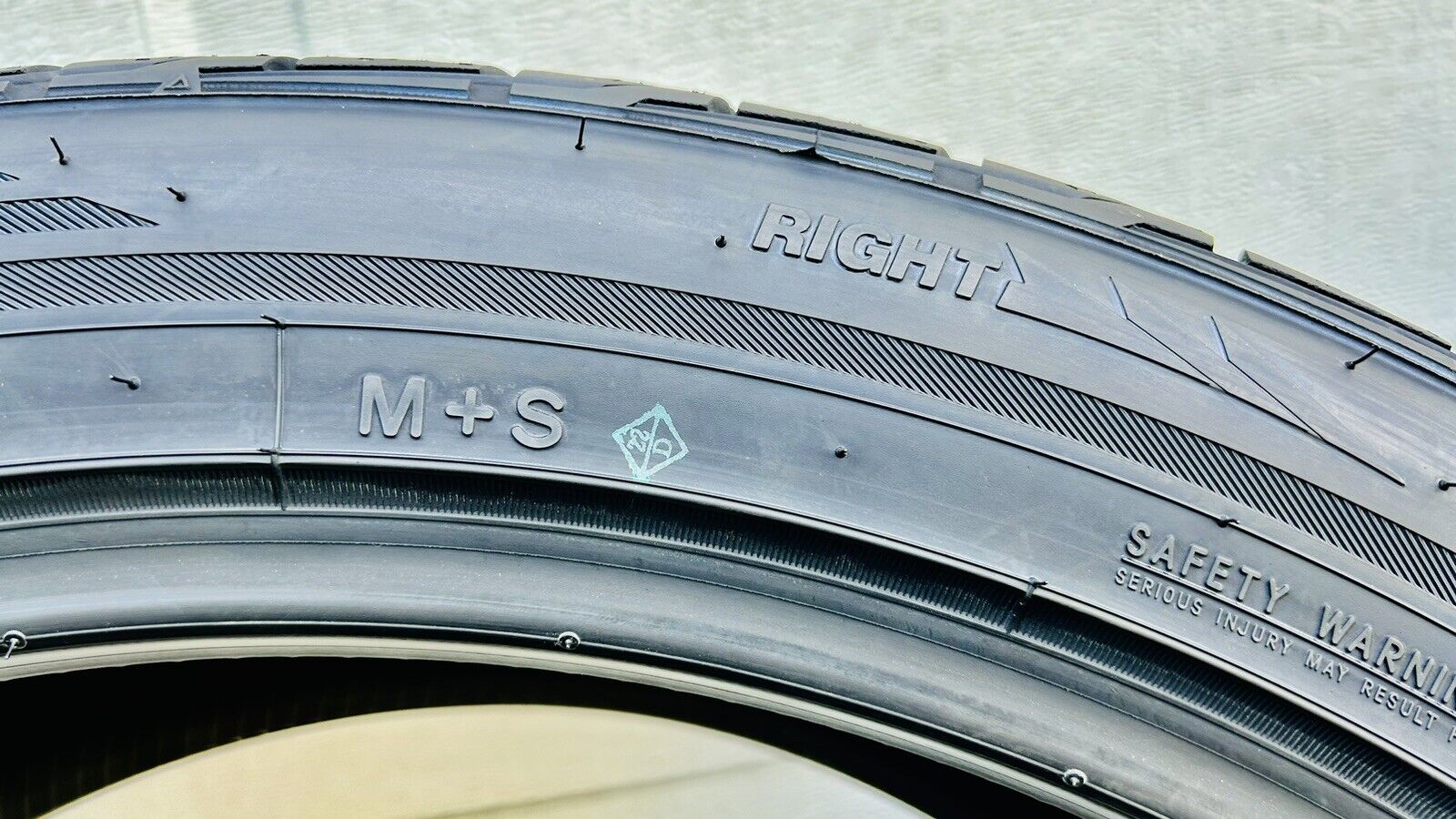
The Toyo Proxes ST III’s sidewall indicates the tire’s mounting direction.
As the name implies, directional tires are designed to only spin in one direction. These tires will have an arrow on the sidewall pointed in the correct direction. Once directional tires are mounted, they can only be used on that side of your car or truck. If you were to take that wheel assembly and move it to the other side of your vehicle, it would spin in the opposite direction, causing serious traction problems.
Staggered wheels are when you have different size wheels on the front and rear of the vehicle. This is a typical layout of performance cars. The staggered wheels are larger on the back to prevent oversteer and achieve better handling. Staggered wheels cannot be rotated front to rear and must only be rotated side to side.
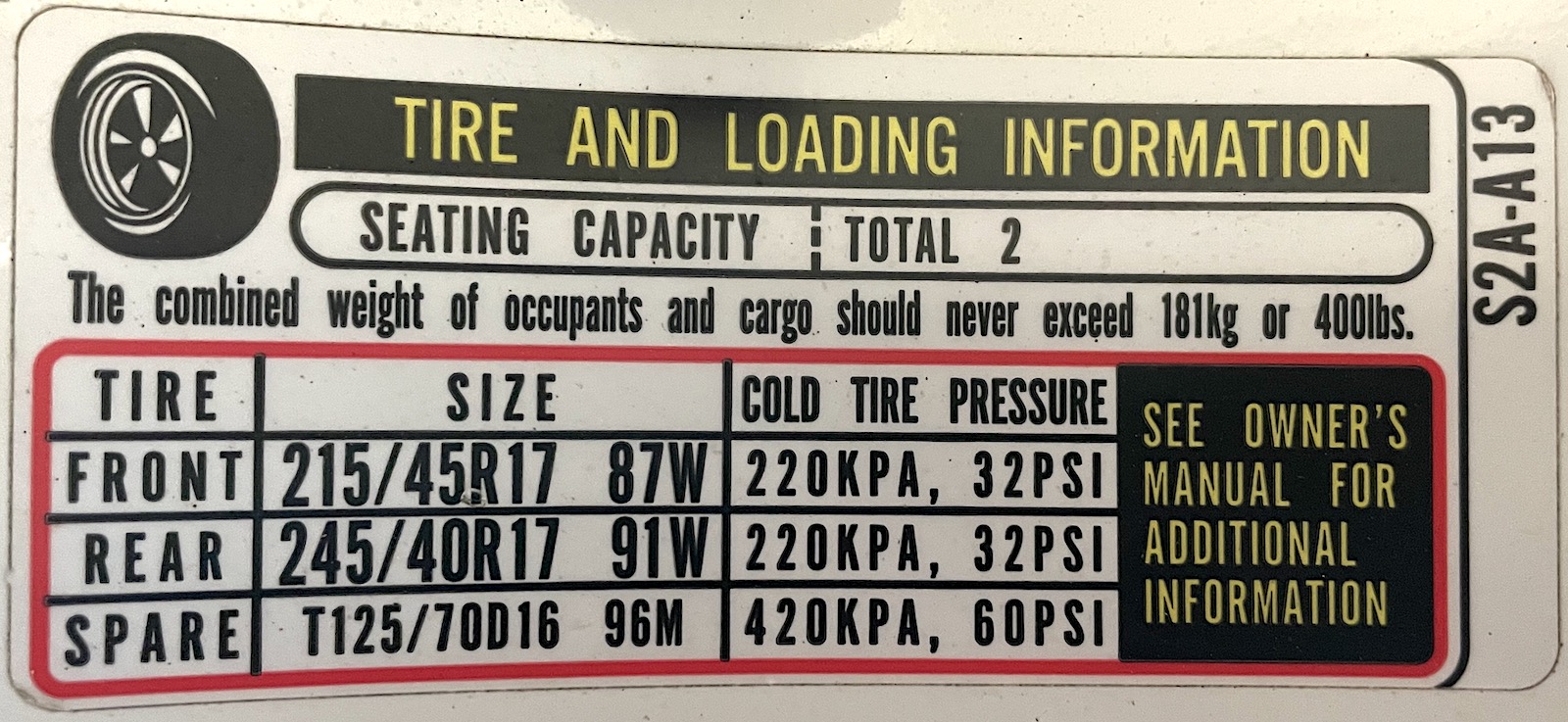
The Honda S2000 uses a staggered tire setup, with 215/45R17 tires up front and 245/40R17 tires in back. These tires cannot be rotated.
One final note: All tire manufacturers guarantee that your tires will last a certain amount of time—provided that you follow the recommended rotation schedule. You’ll need proof of tire rotation to take advantage of the warranty.
Shop now for tires
